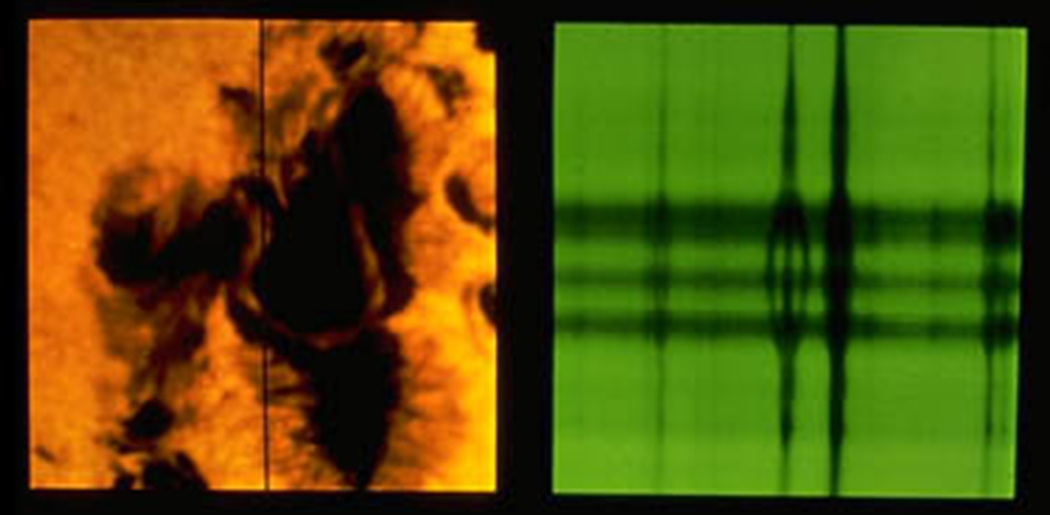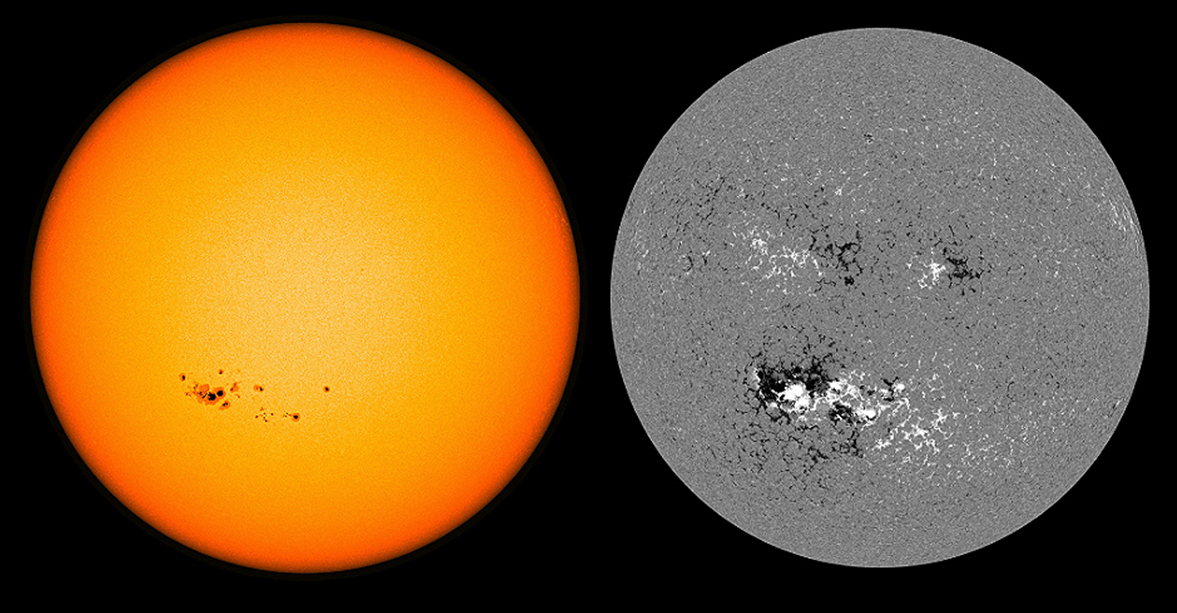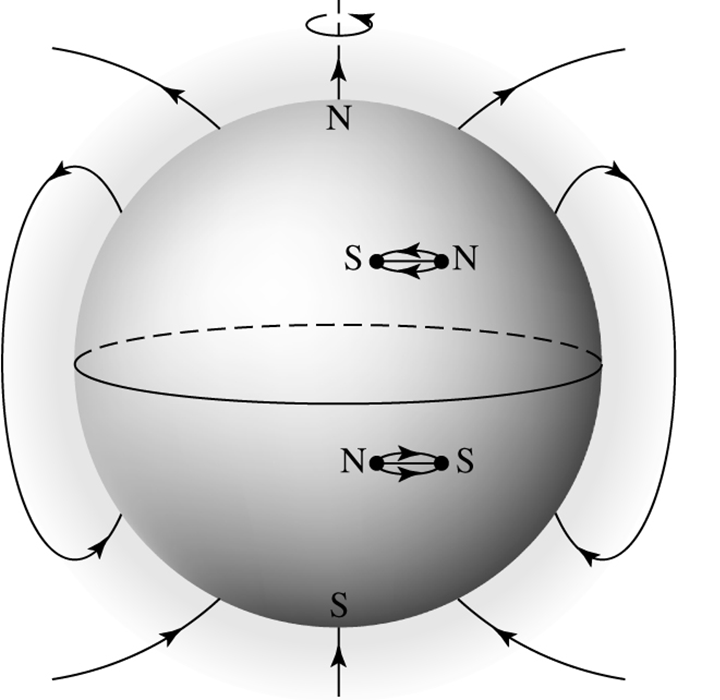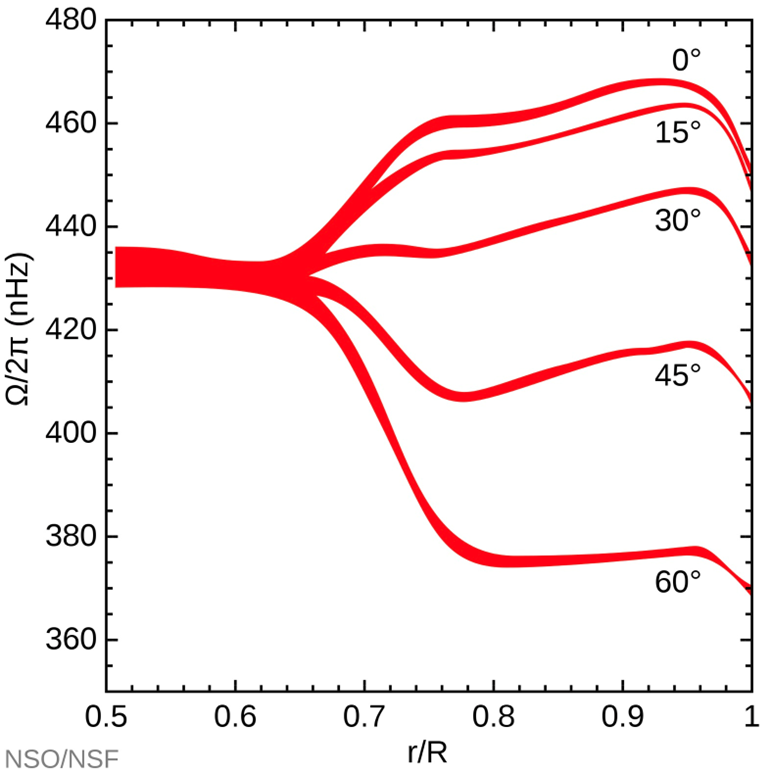PX282 - G3 - sunspots

image: NASA/BBSO
-
note: sunspots are dark as they are relatively cooler that the surrounding, at a temperature of
-
the cooler regions of enhanced magnetic field, revealed by zeeman splitting of absorption lines, supress convection and allow the spot to cool

image: NOAO
-
note: the black line on the image on the left is the light passed to the spectrograph, shown on the right, which shows the zeeman splitting
-
the global magnetic field is approximately a dipole with magnetic flux loops emerging with spots at active regions
-
opposite polarity is seen at either side of the spots
-
the polarity is reversed either side of the equator

image: NASA/SDO
- note: visible light image on the left, magnetogram determined from zeeman splitting on the right

image: carroll & ostile (2007)
- a large-scale dipole field is present with higher order flux loops associated with sunspot groups
- generated by magnetic dynamo, requires bulk shearing flow in a conducting medium (and speed magnetic field)
- connects the kinetic energy to the magnetic energy
- in the sun, shearing flows from differential rotation (equator rotates faster than the poles) at tachocline (the core rotates as a solid body) drives the solar dynamo

image: GONG/NSO